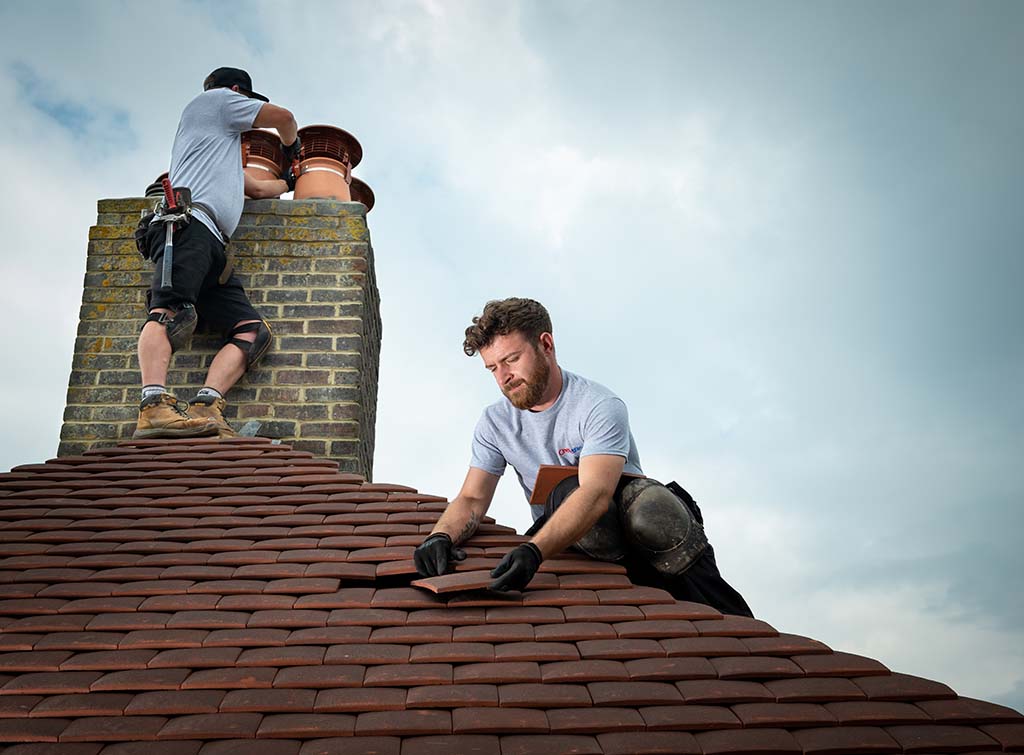Understanding Roof Replacement in the UK: What Householders Must Know
Understanding Roof Replacement in the UK: What Householders Must Know
Blog Article
The UK is home to some of the largest projects in terms of improvements. Roofs in the UK are constantly subjected to rain, wind and frost. Over time, even the most well-built roofs begin to deteriorate, making replacement a necessary investment for maintaining safety, energy efficiency, and property value. The decision to replace a roof is often prompted by recurring leaks, missing tiles, sagging sections, or visible wear that can no longer be fixed with simple repairs. It's important for homeowners to act before minor issues escalate into costly structural damage. A new roof can also improve a house's appearance and insulation. Roof replacement is a worthwhile and smooth process with the proper planning.
The lifespan of roofs in the UK is heavily dependent on how they are maintained and the materials used. The traditional choice for British houses is slate and clay tiles. These can last up to 100 years when installed and cared for properly. Concrete tiles are more affordable and still offer around 40 to 60 years of durability, making them a popular option for modern homes. The life expectancy for felt roofs is usually 20-30 years. They are often found on garages and extensions. Patch repairs can be expensive and may not extend the roof's life. Getting a professional roof survey can help determine whether replacement is necessary and what options are best suited to the specific structure and location of your home. During the assessment, factors such as roof pitch and condition of underlayment should be taken into consideration.
The right material for your roof replacement is important in the UK, because different materials offer varying levels of durability, cost, and insulation. Traditional slate is a popular choice for its classic appearance and long lifespan, but it can be expensive and heavy. Concrete and clay tiles are also common and can offer a good balance between cost and performance. For those seeking a more modern option, composite or synthetic materials are becoming increasingly popular. These alternatives are often lighter, easier to install, and come with long warranties. Your choice will also depend on the style of your home and local planning regulations, particularly if you live in a conservation area or a listed property. Consulting with a roofing expert can help ensure that your new roof is both functional and compliant with local guidelines.
The process of Typical roof replacement prices in the UK usually begins with an inspection carried out by a roofing professional. This assessment helps determine the extent of the damage and the most suitable materials for the replacement. After selecting the right materials, the roof will be removed and the structure underneath examined. If the roof deck is damaged, it may need to be replaced before the new roofing materials are installed. Depending on the complexity of the roof, this process can take several days to complete. A high-quality roof replacement involves more than just laying new materials; it includes ensuring that the underlying structure is sound, proper insulation is installed, and the roof is adequately ventilated to prevent future issues. To get more details please look at www.roofadvisor.co.uk/how-much-does-a-roof-replacement-cost-in-the-uk/
In the UK, a wide range of roofing materials is available, and selecting the right one depends on factors such as the type of property, budget, and desired longevity. For homes that have a more classic look, traditional materials like clay tiles or natural slates make a great choice. These materials offer long-term durability, with slate roofs often lasting over 100 years if maintained properly. For modern homes, concrete tiles or asphalt shingles are often preferred due to their affordability and ease of installation. Bitumen- or rubberbased materials are often used on flat roofs in extensions or commercial buildings. The choice of material will affect the roof's overall cost, appearance, and performance, so it's essential to consult with a roofing contractor to determine the best option based on your home's specific needs.
The UK roof replacement is an important but often overlooked investment. It can significantly improve the safety and efficiency of your house, as well as its value. Homeowners can make sure that their project is successful by recognizing the early signs of roof damage, selecting the best materials and working with reputable contractors. Although the cost may seem daunting, the long-term benefits-such as reduced maintenance, improved insulation, and increased property value-make it a worthwhile decision. Taking the time to research, plan, and invest wisely will pay off in the long run. Whether you live in a rural cottage or a suburban townhouse, maintaining a secure and reliable roof is essential for comfortable living. Roof replacements can add beauty and function to your house if you take the right steps.